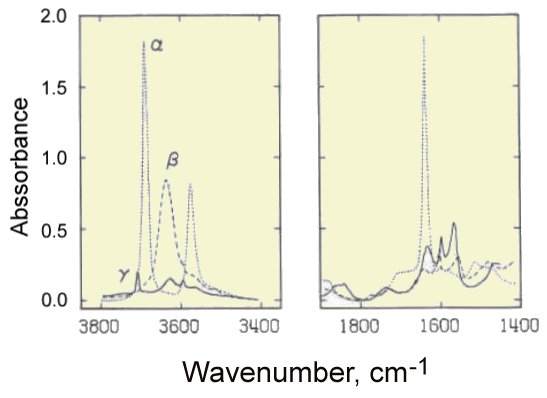
Room-temperature infrared spectrum of cordierite from Manitouwadge in the water stretching (left) and bending (right) regions.
| Don S. Goldman and George R.
Rossman Division of Geological and Planetary Sciences California Institute of Technology Pasadena, CA 91125 |
Wayne
A. Dollase Department of Geology University of California Los Angeles, CA 90024 |
